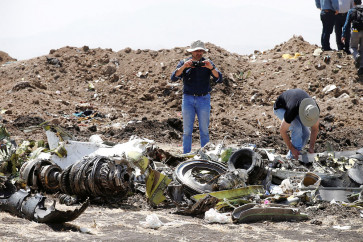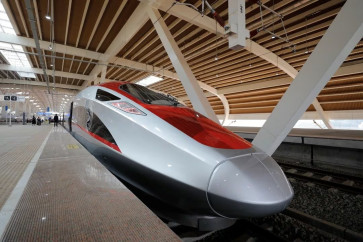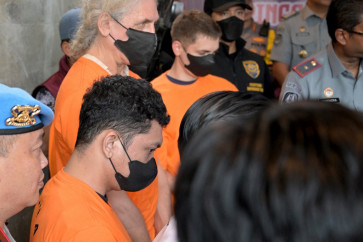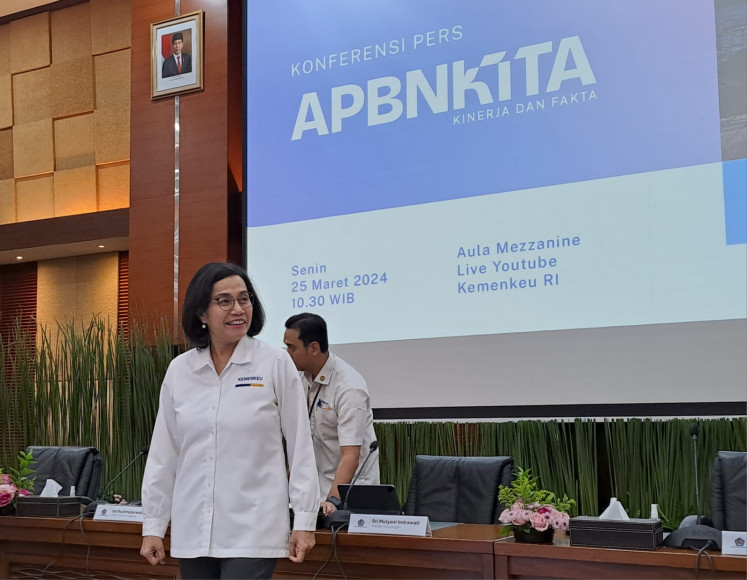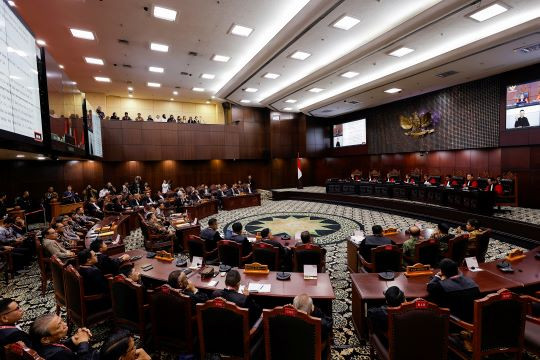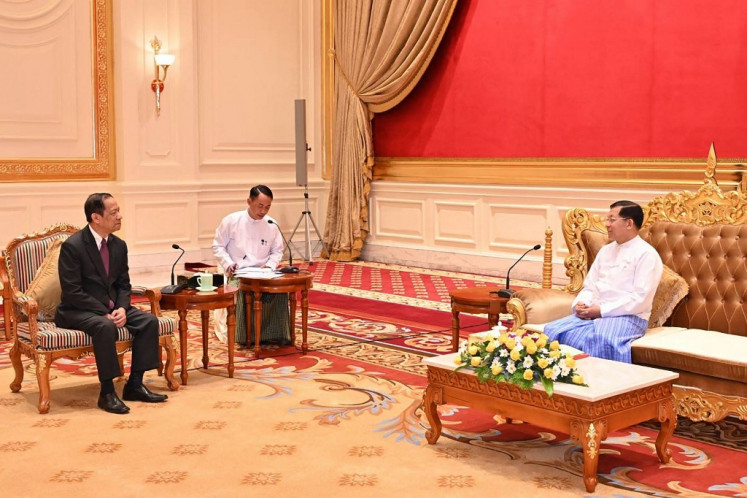Grim reality in tranquil oasis
Battered box, a cradle, not a coffin
Change Size

Battered box, a cradle, not a coffin.
Eight years ago on Dec. 26, Indonesia was struck by the third strongest earthquake in the world’s recorded history. More than 170,000 perished in Aceh — another 60,000 in nearby countries. Such natural disasters cannot be prevented, but effective preparations are possible.
DIOS sounds like an upmarket fashion house selling Italian calfskin handbags, though the entrance is more the airy foyer of a smart resort.
The walls carry relaxing pictures of beautiful Indonesia, the images beloved by government tourism.
So far, so good.
After check-in why not take a guided tour? Through this door please, and just stand.
There’s little more to do because the space is draped in black curtains and it seems there’s no way forward.
Then the noise begins, a full-on real life recording of people in panic following a natural tragedy. The distress is so close the terror is tangible.
“Welcome to the Disaster Oasis Training Center, otherwise known as DIOS,” said Sari Timur, director of the Yakkum Emergency Unit (YEU) that runs DIOS.
“As far as we know this facility is unique in Indonesia.
“We call this our hysteria room. Outside you saw the Indonesia we love. Now, some reality. Enter the museum.”
When the racket ceases and the curtains open the ear-bashed visitor staggers into a large room with a mezzanine floor. At its center a grubby, scratched Styrofoam fish box on two dugout canoes.
They’re surrounded by other garbage, making the display look like the work of a deranged artist with post-modern pretensions.
But this box is special. It saved the life of baby Nuri Isani. She was popped into the container by her mother just as the December 2004 tsunami Aceh hit following the massive undersea earthquake.
Most of the family perished including her mother but Nuri survived and was found bobbing in the water two days later, safe in her little lifeboat.
The message is clear: Screaming and running is a natural reaction but one heroic parent rapidly improvised and saved her daughter. In an emergency you need to think fast and act faster.
Miracles happen, but they often need a human nudge.
Elsewhere in the museum are photos of terrible destruction and heroic people. There’s no grotesque footage of bloated corpses, but the evidence is enough to ensure the visitor understands the enormity and tragedy that follows when nature turns brutal.
If still in doubt there’s a television, bicycle and bits of farm equipment, all ash gray, cemented and distorted. They lie in a heap like the concreted corpses of the victims of Vesuvius, the Italian volcano that exploded in the year 79, smothering the people of nearby Pompeii.
The exhibits are just one feature of DIOS. The others are the solidly-built cottages sprinkled around a small pool, each one named after a disaster area like Nias, Flores and Lombok and featuring the architecture of the regions. A soccer field alongside doubles as a helipad and evacuation zone.
The center has 31 bedrooms and four meeting rooms where moving the furniture is inadvisable. The desks are made of tough teak, designed to shelter should an earthquake hit and masonry tumble.
DIOS is promoted as “a pleasant and peaceful area in the midst of plight”. The setting is serene, the ambience a delight.
“That’s what most foreigners say,” said Sari. “Unfortunately, many Indonesians take a different view. They prefer to have seminars in luxury settings.”
DIOS is hardly Hotel Hardship. The rooms have splendid outlooks and WiFi but no television — this is a place for serious study.
When you’ve tired of the museum there’s a library, a luxury-seat theaterette and a display of smart thinking drawn from real disasters, with the presence of a manikin corpse on a trolley as a reminder of the real purpose.
No sterile dressings for the wounded? Use young banana-leaf stems before they uncurl. The insides are clean and moist. Damaged hands can’t hold spoons? Wrap the handles in cloth and twist the metal around to suit. Need splints for fractured femurs? Split bamboo does just fine.
Straight up the center of the complex past the evacuation signs and on a clear morning can be seen Mount Merapi, the fire mountain that exploded in 2010 killing 353. This put DIOS to the test.
The idea of an emergency training center came from the previous director of Yakkum, Sigit Wijayanta using a grant of ¤502,000 (US$ 662,000) from the German Protestant Agency for Diakonia (service) and Development known as EED.
Local architect Setyo Dharmodjo designed the reinforced quake-resistant buildings to be functional but appealing.
Despite YEU’s Christian background, Sari stressed the NGO was absolutely non partisan.
“We help everyone in distress whoever they are and we never proselytise,” she said. “That’s not our job or interest. This is a Muslim area and we are the minority so we need and get their acceptance and support.”
Her office wall is dominated by a picture of the late president Abdurrahman “Gus Dur” Wahid, an Islamic scholar who constantly preached pluralism and tolerance, above a Javanese poem in his honor
Despite this a few have protested the design of some buildings, claiming the roofs are too steep and therefore like a church, or that crucifixes can be seen or imagined in the way cross beam supports have been designed.
Logical explanations regarding load-bearing tend not to move those determined to find signs of sinister intent — but these have usually been dismissed by the less superstitious majority. Many of the staff are Muslims and find no fault in the environment or philosophy, Sari said.
The complex is busy, mainly running courses for corporate clients from across the archipelago. It would seem the ideal place to train the police and army, but so far no inquiries.
According to YEU information manager Dita Novirani about 6,000 new hotel beds have become available in Yogyakarta in the past year, many at prices competing with DIOS, but offering a less thought-provoking environment.
—Photos by Duncan Graham

